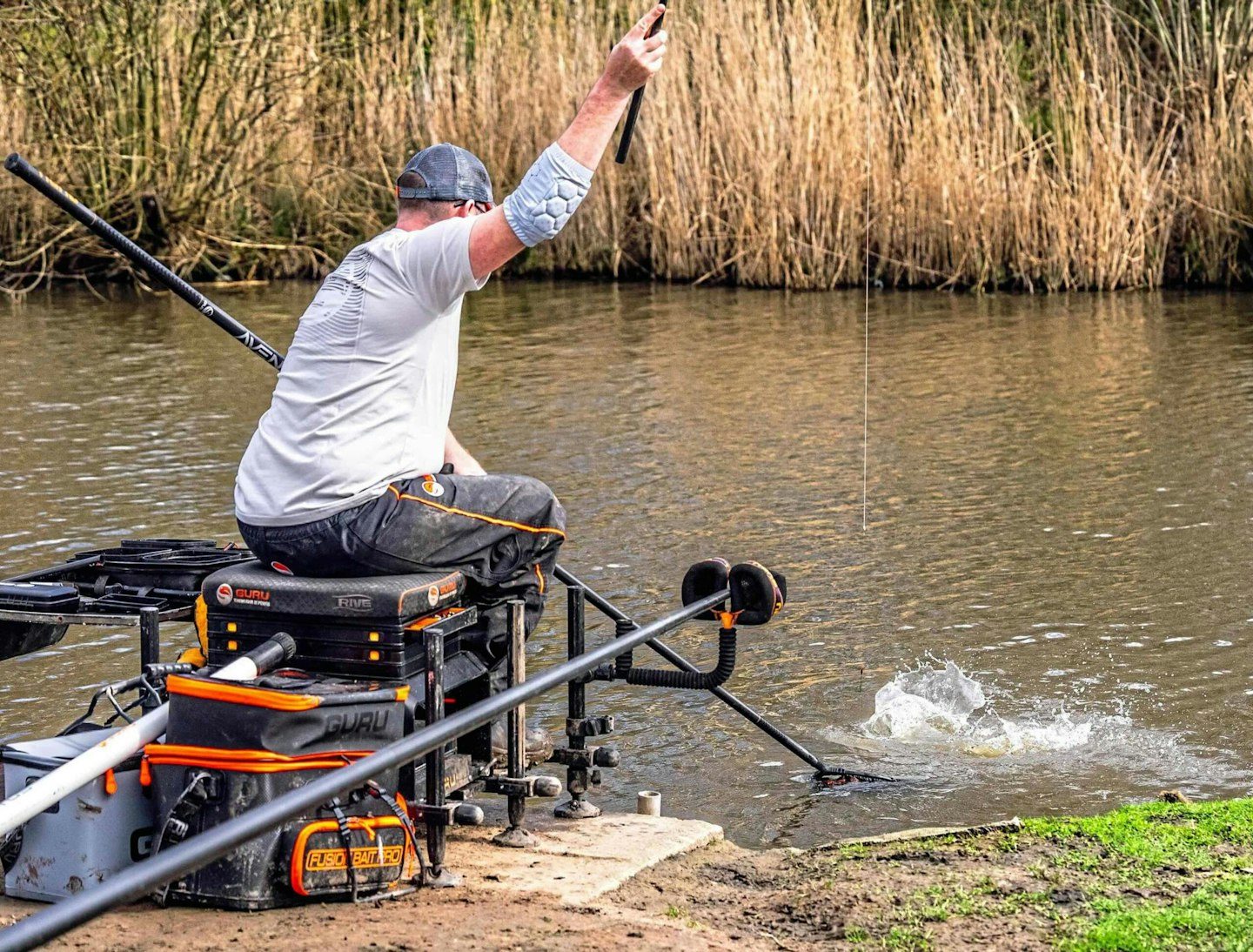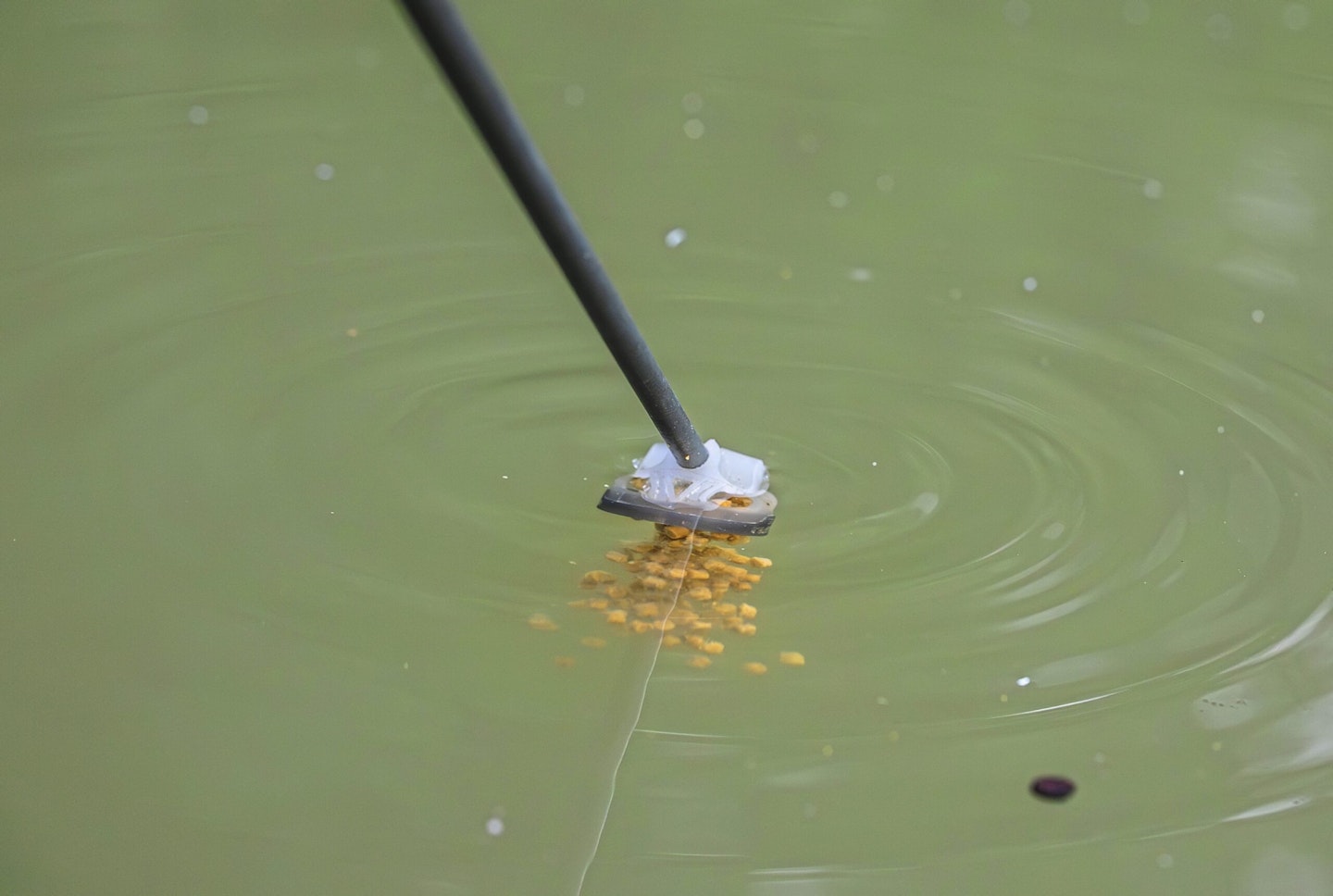The area tight to a far bank or island margin is known as a mud line. It’s home to some of the shallowest water that your swim has to offer and, once the sun gets up, it can be a magnet for carp and F1s.
However, the fish can also be a little edgy at times, so you need to use suitable rigs and feed these swims in a specific way if you want to avoid being plagued by line bites and foul-hookers.
IF YOU WANT TO TRY OUT ANDY'S TIPS, HEAD TO ONE OF THESE GREAT VENUES!

One rig rules
There’s only one rig I use for targeting the mud line. Stability is key, and you need to anchor your hookbait over the top of your loosefeed. To do this, I use a 0.4g Guru Bagger, shotted with a bulk just above the hooklength knot. My mainline is 0.17mm, to a 3ins hooklength of either 0.13mm (mainly F1s and the odd carp) or 0.15mm (just carp) to a size 16 Guru SLWG hook. The short hooklength gets all the rig’s weight close to the hookbait, keeping it nailed to the deck.
OUR HELPFUL GUIDE TO TYING POLE RIGS WILL HAVE YOU MAKING EXCELLENT RIGS IN NO TIME...

The ideal depth
A good mud line swim allows you to get tight up to the bank. Reeds or bushes may look attractive, but the fish can get among them, and that puts them out of range and more difficult to catch. Having the right depth is vital, and you need one that the fish will remain comfortable in, while not being tempted to come off-bottom. If it’s too shallow, they won’t settle, but if it’s too deep, they can come off the deck and foul-hooking is inevitable. Plumb up and try to find anywhere between 1ft and 2ft.
Try to get your float almost touching the far bank, so that the fish can’t get behind your rig. This reduces the chances of them brushing up against the line, which is a recipe for trouble. You’ll often get off to a good start, before it peters out for a while. Rest it and, when you go back on it, the fish should respond positively. As a rule of thumb, it’s an area of your swim that will get stronger as the session progresses.
THE BEST FISHING POLES WILL HELP YOU PRESENT YOUR RIG ACCURATELY TO CATCH MORE FISH!

Feeding strategy
Micro pellets are the first bait I feed, but the quantity depends on the number of fish in the swim. You don’t want the area swarming with them or they’ll become too competitive, and your float will be bouncing up and down, making it tough to detect proper bites.
Having just two or three fish there at once is ideal. I rotate between small, medium and large pole-mounted pots, using a bigger version when the swim is devoid of fish to draw them in, then scaling down once a few arrive. Feed a small clump each time you ship out, preparing your micros so that they are just about damp enough to pat into the pot.
If your swim is on the shallower side of the limit, groundbait tends to work better. A damp, pellet-based mix that sinks quickly is perfect.
FISHING THE POLE COULDN'T BE EASIER IF YOU FOLLOW THESE EXCELLENT TIPS.

Effective hookbaits
A 4mm or 6mm expander pellet will go on the hook if I am feeding micros. It’s rare that small fish turn up in such shallow water, allowing you to use a soft hookbait without fear of it being pecked away. Lift gently to strike and it won’t come off even if you miss the bite. Make sure the hookpoint remains on show, with the expander sat in the bend. A cube of meat or a pair of dead red maggots stand out nicely when fishing over the top of groundbait.
FOLLOW STEVE RINGER'S ADVICE TO CATCH MORE F1'S USING PELLETS.

